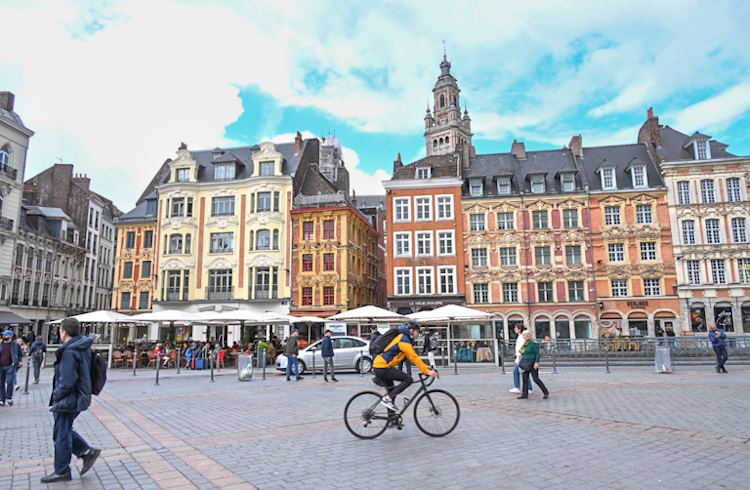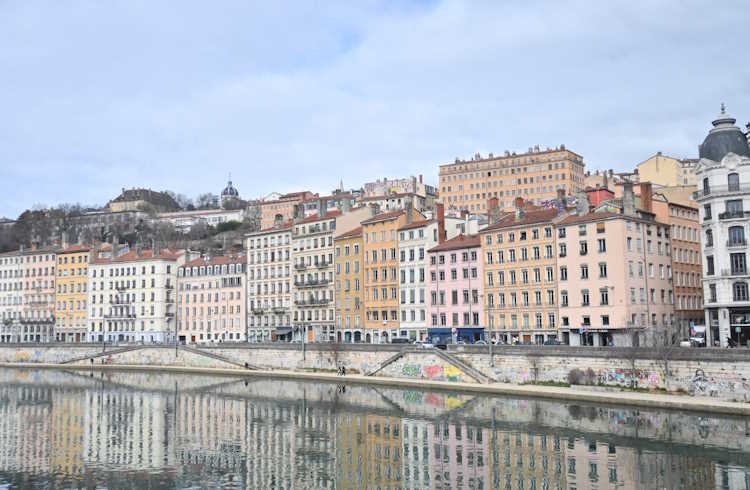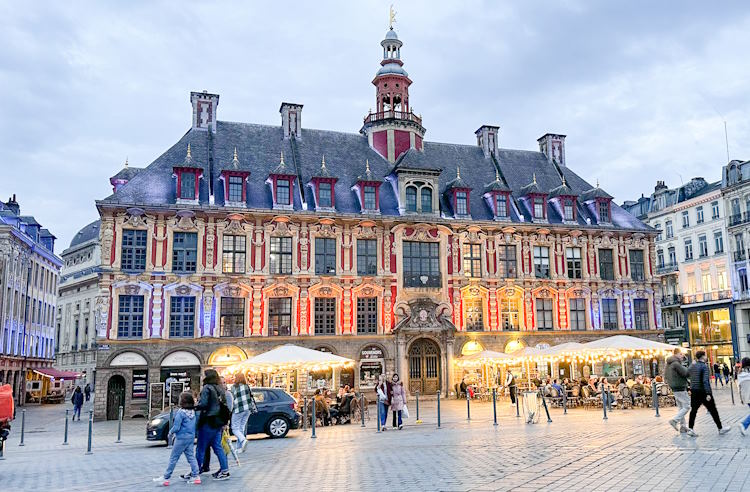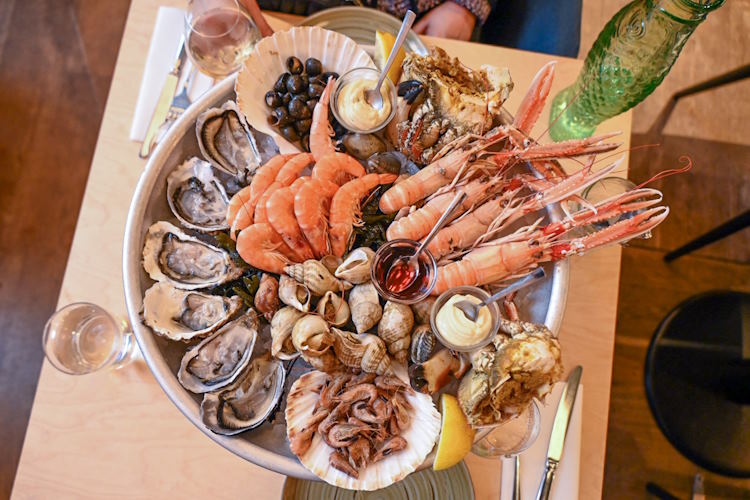We all love Paris – but if you enjoy French food, history, and culture and aren’t fond of crowds, make room in your heart for Lyon and Lille. Here’s why they’re worth a visit (or two).
Shares
 Photo © Jessica van Dop DeJesus
Photo © Jessica van Dop DeJesus
When people think of France, their minds usually go to the Eiffel Tower in Paris or the lavender fields of Provence. But there’s much more to see and experience throughout the country. I've fallen in love with two French cities that we hear very little of outside France: Lyon and Lille. These second cities are both filled with art, culture, architecture, and French charm without the crowds (or the price tags) of Paris. They are also easily accessible from Paris if you want to take an impromptu escape during your travels.
Here's a mini guide to both cities.
How to explore Lyon, the food capital of France
France's third largest city, Lyon, in southeastern France, is known as the country's gastronomic capital. You can't deny it when you see murals across the city dedicated to the centuries-old culinary traditions of the region, especially of the beloved chef Paul Bocuse who amplified French cooking to the world.
Start your trip with a free walking tour to get acquainted with Lyon. Volunteers host the walking tours, and love sharing the city’s monuments and history. Make sure you pack comfortable walking shoes and a fully charged phone or camera to take tons of pictures.
Once you’ve worked up an appetite, dig into Lyon’s culinary side. Begin your experience at Les Halles de Lyon Paul Bocuse, the city's premiere food hall. The atmosphere is lively, with stalls dedicated to Lyonnaise specialties lining the market.
Cheese lovers will rejoice at booths filled with French varieties such as Comté, brie, and goat cheeses. Or satisfy your sweet tooth at the patisserie stalls with perfectly crafted tortes topped with colorful berries or decadent chocolate. Or take a leisurely lunch break at one of the many restaurants offering freshly shucked oysters and wines from the neighboring Cote du Rhone wine region.
Lyon is home to a special style of restaurant called Bouchon Lyonnais. The government recognizes bouchons as keepers of the traditional Lyonnaise gastronomy, such as quenelle Lyonnaise, a mix of seafood and eggs shaped like an egg and doused in a creamy sauce, or saucisson brioché, a buttery brioche stuffed with handmade sausage. One of our most memorable meals was at the widely known Daniel & Denise, where we feasted on one of my favorite Lyonnaise treats, the pate covered with a flaky crust.
Beyond French cuisine, Lyon also has a thriving immigrant community offering many global dining options. We loved the Peruvian fare at Barraceviche, probably the best Peruvian food I've had in Europe, with fresh ceviches, arroz chaufa, and delectable pisco sours. Another fun stop is Kafé Stockholm, a Swedish-owned café with freshly baked Swedish cinnamon buns and open-faced sandwiches.

Lyon is a very walkable city and has excellent public transport options. Aside from the well-known museums such as Musée des Beaux-Arts, there’s plenty to explore just walking around the city. Head to the Basilica of Notre Dame de Fourvière church for spectacular views of Lyon. Work your way down to the Rhône River, where you can catch locals sipping wine at the many cafes along the walkway. There are secret paths throughout the city that you can learn more about on your walking tour of Lyon. During the summer, boat tours on the Rhône River are also available. Or acquaint yourself with the neighborhoods beyond Vieux Lyon for a taste of local life. We stayed in the Croix-Rousse neighborhood on the city's west side, filled with cozy wine bars, trendy restaurants, and a lively Sunday market.
Lille, a lively French city with small-town charm
Less than an hour by train from Paris, Lille is a beautiful city with an interesting cultural mix. It’s located French Flanders, less than 12 miles from the Belgian border, and the Flemish influence is evident throughout the city, with quays reminiscent of Ghent and Bruges. The Grand Place, a picturesque town square with well-preserved buildings dating back to the Middle Ages, is a prime example of jagged-edged Flemish Renaissance Revival.
Like any French destination, Lille has a robust culinary identity with a wide selection of restaurants in every price range. We started our trip to Lille with a Michelin-Guide tasting menu at Les Touquees by Benoit Bernard, served in the inn's dining room. We indulged in a five-course menu with wine pairing, followed by a short walk around the charming neighborhood, and then stayed at the inn by the same name. Although Les Touquees is not in the city center, we enjoyed being in a residential neighborhood adjacent to the Citadel of Lille, a former military fortress built during the mid-17th century. As you walk along the quays, there’s a sense of serenity with all the green spaces and quaint ivy-covered stone homes.
Bring your walking shoes since the best way to get to know the city is on foot. There are plenty of independent shops along Rue de la Monnaie in Vieux Lille, where you can find handmade art, perfumes, and chocolates.

Take your time strolling around the Grand Place, especially early in the morning or late at night, to capture the perfect shot of Hotel de Ville de Lille (Lille’s town hall), as its belfry is a UNESCO World Heritage Site. In the summer, a second-hand bookstore comes to life at the courtyard of the Vielle Bourse (old stock exchange), along with chess tables and dance performances.
Fans of art will love the Palais de Beaux Arts, whose architecture and interior design are as captivating as its art collection. Across from the museum is Place de la Republique, an ideal place for a little break from walking around the city. During the summer, you can also get to know Lille by water with kayak or boat tours along the quays.
Lille has become a popular quick getaway from Paris, Brussels, and Luxembourg City. If you're traveling during a busy weekend, make restaurant reservations to ensure you can get into the local hot spots.
Due to its proximity to the northern coast of France, seafood is widely available, and seafood towers of freshly shucked oysters and langoustines rule at most restaurants. One of the regional specialties is waterzooï, a hearty Flemish seafood stew made with cream, carrots, leeks, potatoes, and chunks of fish. Lille is also known as the “beer capital of France,” with more than 50 craft breweries plus plenty of selections from its Belgian neighbors offered on tap. Wine lovers will be happy with the comprehensive wine lists offered even at simple restaurants.

France is hosting the 2023 Rugby World Cup between 7 Sept - 28 Oct, with Lille and Lyon hosting matches. Other cities such as Nice, Marseille, Saint-Etienne, Bordeaux, Paris Saint-Denis, Nantes, and Toulouse will also host.
Related articles
Simple and flexible travel insurance
You can buy at home or while traveling, and claim online from anywhere in the world. With 150+ adventure activities covered and 24/7 emergency assistance.
Get a quote


No Comments